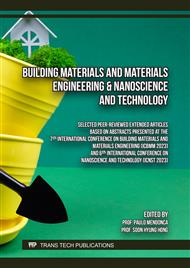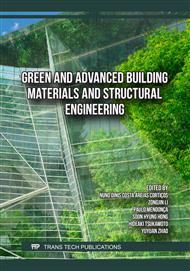p.87
p.95
p.101
p.113
p.119
p.125
p.133
p.143
p.151
Basic Study on Applicability to Artificial Barriers for Radioactive Waste Disposal Facility for Various Zeolites
Abstract:
Artificial barriers are being considered for the burial disposal of low-level radioactive waste in Japan. The artificial barrier consists of i) a low permeable layer made of bentonite materials that suppresses migration of nuclides due to advection, and ii) a low diffusion layer that uses cementitious materials that suppresses migration of nuclides due to diffusion. In addition, as methods of disposing of radioactive waste generated by the accident at the Fukushima Daiichi Nuclear Power Station, controlled disposal and isolation-type disposal are being considered. We thought that it would be effective to add adsorption performance to the performance of suppressing migration of such radioactive substances. In this study, we designed and experimented on the adsorption performance of mortar mixed with various zeolites, which had never been examined. As evaluation methods, i) fluidity, ii) strength, iii) low diffusivity, and iv) distribution coefficient of cesium and iodine were obtained. Based on the results, we reexamined the composition and conducted experiments to examine the applicability to high-adsorption artificial barriers. As a result, it was confirmed that the mass transfer resistance tends to be low due to the zeolite being porous. It was also shown that the strength of mortar mixed with zeolite depends on the cement matrix. As a result of this research, the distribution coefficient of cesium in cementitious materials using zeolite with a high cation exchange capacity designed in this research is higher than that of cementitious materials for low-level radioactive waste disposal facilities currently in operation 1,500 times was obtained. On the other hand, we were able to discover the possibility of examining construction on a full-scale regarding fluidity and compressive strength. As a future task, it was found that it is necessary to investigate a more practical artificial barrier by increasing the strength and densification of the cement paste.
Info:
Periodical:
Pages:
133-142
Citation:
Online since:
December 2023
Authors:
Price:
Сopyright:
© 2023 Trans Tech Publications Ltd. All Rights Reserved
Share:
Citation:



